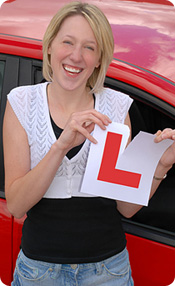
|
||
 |
ASM - Practical Test For Cars Explained
What happens during the test
There are 5 parts to the driving test:
- an eyesight check
- ‘show me, tell me’ vehicle safety questions
- general driving ability
- reversing your vehicle
- independent driving
The test is the same for both manual and automatic cars.
How long the test lasts <
You’ll drive for around 40 minutes.
You’ll drive for around 70 minutes if you’re taking an extended driving test because you’ve been banned from driving.
Eyesight check
You’ll have to read a number plate from a distance of:
- 20 metres for vehicles with a new-style number plate
- 20.5 metres for vehicles with an old-style number plate
New-style number plates start with 2 letters followed by 2 numbers, such as AB51 ABC.
You’ll fail your driving test if you fail the eyesight check. The test will end.
‘Show me, tell me’ questions
You’ll be asked 2 vehicle safety questions known as the ‘show me, tell me’ questions .
You’ll be asked the:
- ‘tell me’ question at the start of your test, before you start driving
- ‘show me’ question while you’re driving
Your general driving ability
You’ll drive in various road and traffic conditions, but not on motorways.
The examiner will give you directions that you should follow. Driving test routes aren’t published, so you can’t check them before your test.
Pulling over at the side of the road
You’ll be asked to pull over and pull away during your test, including:
- normal stops at the side of the road
- pulling out from behind a parked vehicle
- a hill start
You might also be asked to carry out an emergency stop.
Reversing your vehicle
The examiner will ask you to do one of the following exercises:
- parallel park at the side of the road
- park in a parking bay - either by driving in and reversing out, or reversing in and driving out (the examiner will tell you which you have to do)
- pull up on the right-hand side of the road, reverse for around 2 car lengths, and rejoin the traffic
Independent driving
You’ll have to drive for about 20 minutes by following either:
- directions from a sat nav
- traffic signs
The examiner will tell you which you have to follow.
They’ll set the sat nav up for you. You can’t use your own sat nav.
If you can’t see traffic signs
If you can’t see a traffic sign (for example, because it’s covered by trees), the examiner will give you directions until you can see the next one.
Going off the route
The examiner won’t give you a fault for taking a wrong turning.
They’ll help you get back on the route if you do.
If you make mistakes during your test
You can carry on if you make a mistake. It might not affect your test result if it’s not serious.
The examiner will only stop your test if they think your driving is a danger to other road users.
Driving test faults and your result
There are 3 types of faults you can make:
- a dangerous fault - this involves actual danger to you, the examiner, the public or property
- a serious fault - something potentially dangerous
- a driving fault - this isn’t potentially dangerous, but if you keep making the same fault, it could become a serious fault
Pass mark
You’ll pass your driving test if you make:
- no more than 15 driving faults (sometimes called ‘minors’)
- no serious or dangerous faults (sometimes called ‘majors’)
If you pass your test
The examiner will:
- tell you what faults you made, if any
- give you a pass certificate
- ask you if you want your full licence to be sent to you automatically - give the examiner your provisional licence if you want to do this
Apply for your full driving licence within 2 years of passing your test if you don’t want to get your licence automatically.
When you can start driving
You can start driving straight away when you’ve passed your test. You don’t need to wait for your full licence to arrive.
Contact DVLA if your full licence hasn’t arrived 3 weeks after you applied for it.
If you don’t pass
The examiner will tell you what faults you made.
You have to book another test and pay again. You have to choose a date at least 10 working days away.
Appeal your driving test
You can appeal if you think your examiner didn’t follow the regulations when they carried out your test.
Your test result can’t be changed, but you might get a free retest if your appeal is successful.
How to appeal
Contact your local magistrate’s court within 6 months to appeal in England and Wales.
If you live in Scotland, contact your local sheriff’s court within 21 days.
If your test is cancelled or there's bad weather
Your driving test can be cancelled or stopped because of bad weather, problems with your car, or for other reasons.
Bad weather
Driving tests aren’t carried out in dangerous weather conditions, such as when the roads are icy or if there’s flooding, thick fog or high winds.
Call your test centre if there are any of these conditions on the day of your test.
The phone number for the test centre is on your booking confirmation email.
If your test can’t go ahead
The Driver and Vehicle Standards Agency (DVSA) will:
- automatically book the next available date for your test
- send you the details within 3 working days - it can take up to 7 days if there’s a long period of bad weather
You can change the date you’re given if it’s not suitable.
You can’t claim for any out-of-pocket expenses if your test is cancelled because of bad weather.
Problems with you or your car
You’ll have to book another test and pay again if your test can’t be completed because of a problem with:
- you, for example, if you feel unwell while taking your test
- your car, for example, if it breaks down during the test or doesn’t meet the rules to be used
If your test is cancelled for another reason
Sometimes DVSA has to cancel tests for other reasons, for example, if the examiner is unwell.
You’ll be sent a new date for your test if this happens. You can change the date if it’s not suitable.
You can apply for a refund of out-of-pocket expenses if DVSA cancels your test at short notice.
If you have a disability, health condition or learning difficulty
When you book your driving test you should say if you have a:
- disability
- health condition
- learning difficulty
You’ll still have to drive to the same standard to pass, but the examiner can make adjustments for your situation.
You have a disability
You might be allowed more time for your test if you have certain disabilities. It will give the examiner time to talk to you about:
- your disability
- any adaptations fitted to your car
You’re deaf or have a hearing impairment
The examiner will use written notes at the start of the test to explain what will happen. If you lip read, they’ll also look at you so you can lip read what they’re saying.
The examiner will usually give directions to you as hand signals. These will be explained to you before your test starts.
Using a sign language interpreter
You can take a British Sign Language (BSL) interpreter with you. They must be at least 16 years old.
Your driving instructor can be your interpreter.
You need to arrange your own interpreter and pay any fees that they charge. You can claim the cost back after your test.
You’re pregnant
You can take a driving test at any stage of your pregnancy. However, you must be able and willing to do an emergency stop.
You have reading difficulties
When you do the eyesight check at the start of the driving test, you can write down the number plate instead of reading it out loud.
You have learning difficulties
The examiner will make adjustments for the independent driving part of the test if you have learning difficulties.
They might ask if you’d prefer to follow traffic signs instead of verbal directions.
You might be able to choose to follow a set of directions using a diagram. You’ll normally be asked to follow up to 3 directions at a time, but the examiner can reduce this to 2 at a time.
Change of address
67 Cardington Road
Bedford
MK42 0BT


